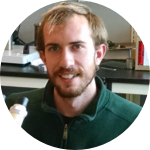About This Project
As physical forces are further implicated as regulators of developmental processes in plants there is more incentive to understand them. Yet while the significance of this area of plant biology becomes more apparent, so too does the lack of research tools available in the field. We propose the emerging field of droplet microfluidics as a platform for the fabrication of hydrogel cellular microenvironments whose mechanical properties can be precisely controlled.
Ask the Scientists
Join The DiscussionWhat is the context of this research?
As physical forces are further implicated as regulators of developmental processes in plants there is more incentive to understand them. Yet while the significance of this area of plant biology becomes more apparent, so too does the lack of research tools available in the field. Although biological research has accumulated extensive techniques for controlling and quantifying the events taking place within a cell, we lack the ability to control the extracellular environment with the same degree of precision. We have recently shown that individual plant protoplasts can be isolated in hydrogel microbeads by using droplet microfluidics. This has the potential to develop into a method that allows researchers to control the micromechanical environment of individual cells.
What is the significance of this project?
Our ability to examine how mechanical signals influence individual cells is limited by the complexity of tissue level stress. The cell wall matrix is continuous and encloses all cells in the plant body. This means mechanical forces acting on the cell wall are transmitted instantaneously throughout the entire organism. The application of a mechanical force on a tissue results in immediate changes to the pre-existing stress profile making it impossible to accurately dissect the micromechanical environment of individual cells. A methodology that allows researchers to manipulate the micromechanics of individual cells in a controlled environment would provide the field of plant biomechanics a powerful tool for isolating mechanical variables at the cellular level.
What are the goals of the project?
Having already captured plant protoplasts in agarose microbeads we next will surround these beads in a stronger hydrogel matrix. A cell encapsulating matrix that is strong enough to mechanically resist cell elongation will be a significant stride in simulating the mechanical world of a cell in tissue.
Using a perfusion cell culture chamber we will be able to track the growth of these cells continuously with time lapse imaging. This system will also allow us to strengthen our microbeads with precise concentrations of chemical cross-linkers while they house living cells. This would yield a dynamic system that allowed us to manipulate the micromechanics of individual cells voluntarily at any point during culture.
Budget
Having already shown that we can isolate individual plant protoplasts in hydrogel microbeads of agarose we will next capture these beads in a stronger surrounding matrix. This perfusion system will allow us to track the growth behavior of these cell precisely throughout their life in the microbeads with time-lapse imaging. Furthermore, because microbead encapsulation of plant cells allows us to control the physical and chemical environment of individual cells, the entire system yields a method with the potential to facilitate novel research in the field of plant cell biomechanics.
Endorsed by
Meet the Team
Team Bio
The research team is comprised mainly of Phil Lintilhac's Lab (Dept. of Plant Biology, University of Vermont) and Rachael Oldinski's Lab (Dept. Engineering and Math Science, University of Vermont). Phil Lintilhac has years of experience in plant biomechanics based research, and has many times designed his own research platforms to answer questions in the field. Rachael Oldinski is an expert in hydrogel engineering helping us idealize and characterize quantitatively the microbead environments.
Matthew Grasso
I received my Bachelors Degree from the University of Vermont in 2013. After a year working as a lab technician I started my Masters Degree in the Dept. of Plant Biology at the University of Vermont in Phil Lintilhac's Lab.
Project Backers
- 3Backers
- 2%Funded
- $20Total Donations
- $6.67Average Donation


